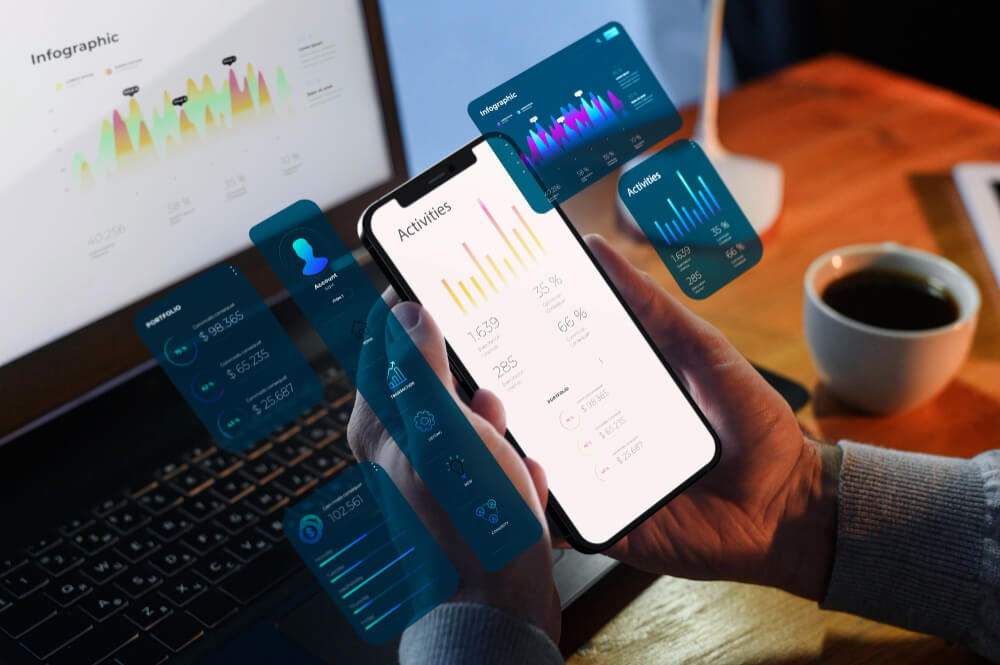If you are planning taxi booking app development, the very first step is understanding the numbers that shape this industry.
The taxi market is massive, constantly evolving, and highly competitive. Having the right statistics on market size, growth trends, and user behavior gives you clarity before you start investing in development.
Think about it: building an app without knowing what riders want, how fast the industry is growing, or which regions hold the strongest opportunities is like driving without GPS. You might still reach your destination, but it will take longer, cost more, and you’ll miss out on smarter shortcuts.
That’s why taxi industry statistics and taxi market insights matter. They don’t just tell you how much revenue Uber or Lyft made last year. They help you understand things like,
- How large the taxi market really is in 2024 and where it will be in 2025.
- Which regions dominate the market and why Asia Pacific is a powerhouse.
- The growth of digital taxi mobile app adoption compared to traditional offline hailing.
- Rider expectations, including preferences for digital payments, eco-friendly rides, and subscription-based models.
- The opportunities for new players who are ready to invest in taxi booking app development.
In this blog, you’ll see 25+ fresh statistics from 2024 and 2025, along with analysis of what those numbers mean for you as a business owner. By the end, you’ll know exactly where the taxi market stands, where it’s going, and how you can position your taxi booking app for success.
Global Taxi Market Size 2024–2025
When you look at the global numbers, you see a market that’s already massive, and still accelerating. If you’re planning taxi booking app development, you need to know how big the opportunity is and how fast it’s growing.
Let’s start with,
1. Market Valuation in 2024 and 2025
- The combined ride-hailing + taxi market was valued at USD 270.81 billion in 2024. (1)
- In 2025, that combined market is projected to reach USD 301.52 billion, showing continued growth. (1)
- Over the longer term, projections suggest this combined market would expand to USD 712.08 billion by 2033, at a CAGR of 11.34 % from 2025 to 2033. (1)
- However, if you look just at “taxi market” forecasts (not including all ride-hailing), some sources estimate the taxi market alone could hit USD 274.6 billion in 2024, rising to USD 592.96 billion by 2033 (CAGR 8.93 %). (2)
- Another estimate from a market analysis cites the taxi market size for 2025 as USD 303.76 billion, with growth toward USD 467.58 billion by 2030 (CAGR 9.01 %). (3)
2. Ride-Hailing Segment
- The ride-hailing market (which overlaps with the taxi + app-based mobility segment) is estimated to reach USD 158.65 billion in 2025. (4)
- That market is expected to grow at a CAGR of 16.61 % from 2025 to 2030, reaching USD 342.07 billion in 2030. (4)
Meanwhile, another study estimates the ride-hailing app segment (focusing specifically on the app interface side) was about USD 85 billion in 2024, expected to grow to USD 186.76 billion by 2033 (CAGR 10.34 %). (5)
This tells you: the app side of this market is growing fast and is a key area for innovation and differentiation.
So, What This Means for You?
- With a base over USD 270 billion in 2024 for the combined market, entering this industry means accessing a vast pie.
- The continued growth toward USD 300+ billion in 2025 signals there’s still room for new players, especially in under-penetrated regions.
- The ride-hailing segment’s high CAGR (16.61 %) suggests many users are still being converted from traditional options to app-based services.
- For your taxi booking app development plans, these numbers suggest you’ll want to focus not just on local competition but on capturing slices of rising global demand.
Regional Breakdown: APAC, North America, Europe, Middle East & Latin America
To understand where your taxi booking app development efforts should focus, it helps to map out regional trends and growth drivers. Below is a breakdown by region with the latest statistics and relevant nuances.
1. Asia-Pacific (APAC)
Asia-Pacific is not just growing, but it’s dominating the taxi and ride-hailing space in many respects.
- In 2024, Asia-Pacific accounted for more than 54.5 % of the global taxi market share. (6)
- The taxi market size in 2024 was estimated at USD 265.51 billion, with forecasts showing growth to USD 529.05 billion by 2032 at a CAGR of 9 %. (7)
- In the ride-hailing segment, Asia-Pacific’s market was valued at USD 44,056.10 million in 2024, and this region is expected to grow at a CAGR of 11.0 % from 2024 to 2031. (8)
- In India, for example, the ride-hailing market in 2024 was estimated at USD 5,286.73 million, projected to continue growing at high double-digit rates. (8)
- Southeast Asia shows even faster growth as markets like Indonesia, Malaysia, Vietnam, Thailand are pushing aggressive adoption of ride-hailing.
- In Vietnam, the electric taxi fleet brand Xanh SM launched in 2023, and by May 2024 it had deployed over 30,000 electric taxis, equal to over 40 % of total taxis. (9)
- Strategic focus for your taxi-booking app development should be: support local payment modes, multilingual support, EV integration, target tier-2/tier-3 cities.
2. North America
While Asia-Pacific leads in size, North America is mature, competitive, and driven by tech and regulation.
- Ride-hailing is well established in the U.S. and Canada, and growth is slower compared to emerging regions.
- In 2024, the ride-hailing market size was approximately USD 150.35 billion, expected to increase to USD 163.55 billion in 2025. (10)
- North America also leads in average revenues per ride, premium service demand, and willingness to pay for comfort, safety, and quality.
- Strategic focus: premium experience, transit integration, regulatory compliance, scalable architecture.
3. Europe
Europe presents a balance of regulation, demand, and urban density. It is a mature yet evolving market.
- The European ride-hailing market in 2024 was valued at USD 57,468.48 million (USD 57.47 billion). (11)
- Its projected CAGR from 2024 to 2031 is about 3.5 %. (11)
- In countries like Germany, UK, France, Spain, local regulations can be strict. There are licensing, taxi quotas, and rules on ride-hailing operations.
- Many companies are integrating their ride-hailing apps with public transit systems to offer “first mile / last mile” solutions in European cities.
- Strategic focus: regulatory compliance, intermodal solutions, safety & EV options, localized features.
4. Middle East & Africa, Latin America
These regions are less uniform but present high growth potential.
- Digital mobility adoption is rising. For example, Dubai’s taxi modernization moved nearly 9,880 taxis onto app platforms, combining public and private fleets. (12)
- Many Middle Eastern cities push for smart city initiatives, EV adoption, and mobility as a service (MaaS) integration.
- Latin American cities often suffer from traffic, parking, and public transport gaps, making ride apps very appealing.
- Many users in Latin America adopt cash-on-pickup, so hybrid payment support is essential.
- Strategic focus: hybrid payments, reliability, regional partnerships, infrastructure adaptability
Trends Shaping Taxi Booking App Development
To build a successful taxi booking app, you need to align with current rider expectations and emerging market trends. From smarter AI-driven features to sustainability and flexible payment options, these trends will shape your app’s design and functionality.
- AI and smarter routing: Predict demand, match drivers efficiently, and reduce idle time while improving overall fleet utilization.
- Cashless payments: Support digital wallets, UPI, and multiple payment gateways to reduce drop-offs and increase conversions.
- Electric vehicles and greener fleets: Integrate EV-specific features like battery status, charge routing, and maintenance scheduling.
- Dynamic pricing and algorithmic fares: Display transparent fares and implement clear driver-pay rules to maintain trust.
- Multi-modal and subscription models: Offer pooled rides, scooters, and ride-pass plans to increase retention.
- Safety and compliance: Include identity verification, emergency features, and adaptable compliance layers for regulatory adherence.
These trends help create apps that are reliable, efficient, and aligned with user and market demands.
User Behavior, Rider Preferences & Taxi Statistics
Let’s dig into who’s riding, how often, and what they expect; insights you’ll want baked into your app’s design.
1. Who Uses Taxi & Ride Apps?
By 2025, Uber has over 180 million monthly active users, representing about a 15 % year-over-year growth. (13) Source: DemandSage
- Globally, more than 300 million people use taxi apps. Out of those, DiDi and Uber account for 150 million users combined. (14)
- In 2024, over 2.5 billion people used ride-hailing services at least once, generating on average 120 million daily ride requests. (5)
- Among rides, urban users make up over 78 % of total trip bookings, and app platforms are active in 150+ countries. (5)
What this tells you: your target audience is enormous. Your app must cater to frequent users, casual users, and casual users who might grow into regulars.
2. How Often & What Kinds of Trips?
- A study in 2024 found 65.8 % of ride-hailing trips last less than 30 minutes. (15)
- The same study showed that 26.7 % of trips correspond to a specific purpose of returning home. (15)
- After the pandemic, behavior shifted: before the pandemic, about 7 % of users rode 4+ times weekly; post-pandemic that number dropped to 4 %. (16)
These data suggest your user base will have many low-to-moderate frequency riders, especially early on, with only a small share of heavy users.
3. Preferences & Sensitivities
- After the pandemic, users became more cautious about in-car hygiene, driver behavior, and physical contact, and more sensitive to cancellations or delays. (16)
- Waiting time perception matters a lot. In ride-hailing research, users weigh unexpected delays more heavily than equivalent gains in early arrival. (17)
- Many riders will abandon or switch apps if the waiting time is too variable or cancellations too frequent. (17)
- Some users show higher sensitivity to pricing changes or surge fares, especially during off-peak hours or in low-demand zones.
4. Implications for Your App Based on the Data
- Design for both casual and frequent riders: loyalty perks, subscription offers, or ride credits can convert low frequency users into regulars.
- Keep waiting time predictable and cancelation risk minimal. That builds trust and user retention.
- Add features around hygiene, safety, and driver transparency, especially in post-pandemic expectations.
- Support routes under 30 minutes optimally, as many rides fall in that range.
- Use demand forecasting to avoid huge fare surges in low-use zones, since many users are price sensitive.
Competition & Key Players
If you want to know who you will compete with, here’s a practical rundown of the major players and what they teach us about building a successful taxi app.
1. Uber
2024 revenue near USD 43.97 billion, and the platform completed around 11.27 billion trips in 2024. These numbers show scale and heavy customer reliance on a polished app experience. (13)
2. Lyft
Lyft remains a top North American player and reported that its driver base generated large earnings in 2024, which signals strong earning opportunities for driver partners and the importance of a fair commission model. (18)
3. Ola
Strong in India, operating in 100+ cities. Ola demonstrates the value of deep local market knowledge, local payments, and regional partnerships.
4. Grab
Dominant in Southeast Asia with very high urban penetration and multi-service offerings. Grab’s mix of payments, delivery, and mobility shows the power of cross-service ecosystems.
5. Bolt, DiDi, and regional players
Bolt is agile in Europe and Africa, DiDi remains influential in China and selected international markets, and local apps like PickMe report strong national revenues. Each shows that regional focus, regulatory know-how, and tailored features win users in specific markets.
Studying major and regional players reveals the features and strategies that matter most. By integrating these insights into your taxi booking app development, you can provide a competitive, user-focused, and regionally adapted solution that meets both rider and driver expectations.
Taxi Mobile App Development Insights: Features, Cost, Timeline
If you’re considering taxi booking app development, it’s important to know what goes into building a successful app, how much it might cost, and how long it takes.
1. User Panel Features
- Sign up/login with social or phone verification
- Ride booking with real-time tracking
- Fare estimates and route selection
- Multiple payment options (credit/debit cards, wallets, UPI, Apple Pay)
- Ride history, loyalty points, and support chat
2. Driver Panel Features
- Driver registration and KYC verification
- Real-time ride notifications
- Earnings dashboard and payout requests
- Navigation and route optimization
- Ratings and performance tracking
3. Admin Panel Features
- Dashboard for rides, revenue, and user analytics
- Driver management and approval workflow
- Fare management and dynamic pricing setup
- Reports and insights for business decisions
4. Optional Add-ons
- Multi-language support for regions like APAC and Europe
- Subscription and ride pass systems
- EV integration for electric fleets
- SOS and emergency features for safety
5. Cost Estimates
- Basic taxi booking app development usually ranges from USD 20,000–40,000, depending on complexity and region.
- Feature-rich apps with AI routing, subscription models, and EV integrations can cost USD 60,000–120,000.
- Platforms with multiple panels (user, driver, admin) and cloud infrastructure require more investment upfront but provide scalability.
6. Timeline
- A minimum viable product (MVP) with core features usually takes 3–4 months.
- Fully-featured apps with multi-language support, payment integration, and analytics dashboards take 6–9 months.
- Agile development helps you launch faster, collect feedback, and iterate for improved user experience.
Planning your taxi mobile app development requires balancing features, cost, and timeline. Start with an MVP, prioritize critical features, and gradually integrate advanced capabilities like AI routing, subscriptions, and EV support. This approach reduces initial investment risk while keeping you competitive in the fast-growing taxi market.
Challenges & Opportunities in Taxi Booking App Development
Launching a taxi booking app comes with its hurdles, but understanding them also reveals opportunities to stand out. Here’s what you need to know before you invest.
1. Common Challenges
- High Competition: Global players like Uber, Lyft, DiDi, and Ola dominate; your app must offer superior features, pricing, or service quality.
- Regulatory Compliance: Local laws vary; driver licensing, surge pricing, insurance, and data privacy must be managed carefully.
- Driver Retention: High turnover impacts service quality; fair commissions, incentives, and easy onboarding are critical.
- Infrastructure & Technology: Poor GPS, limited network coverage, and low digital payment adoption can hinder adoption.
- User Expectations: Riders demand real-time tracking, transparent fares, short wait times, and safety features.
2. Opportunities for New Entrants
- Tap under-served cities in Africa, Latin America, and Southeast Asia.
- Integrate EVs and sustainable mobility options.
- Focus on niche segments like corporate or subscription-based riders.
- Offer bundled or multi-modal services and leverage data-driven improvements to optimize experience.
These insights guide effective, future-ready taxi booking app development.
Future Outlook: Taxi Booking App Development in 2025 and Beyond
The global ride-hailing market is projected to grow from USD 145.8 billion in 2025 to USD 798.8 billion by 2035 (CAGR 18.5%), while the taxi app market is expected to reach USD 87.6 billion by 2032 (CAGR 9.1%). (19, 20)
Emerging technologies like electric vehicles, AI-powered route optimization, and autonomous rides are shaping this growth.
New entrants should focus on niche markets, regulatory compliance, and consumer preferences, offering cashless payments, real-time tracking, and multi-modal options to stay competitive and capture market share in an evolving space.
Conclusion: Key Takeaways and Next Steps
The taxi and ride-hailing market is booming, with the global taxi market at USD 270 billion in 2024, projected to exceed USD 301 billion in 2025, and ride-hailing growing at a CAGR of 16.6%. This is your opportunity to tap into a fast-growing, high-demand market.
If you want your app to succeed, you need a partner who can deliver advanced features, reliability, and market-ready solutions. Vrinsoft Technology builds taxi apps that include AI-based routing, dynamic pricing, real-time tracking, secure payments, and EV fleet management, helping your app stand out from the competition.
Contact us today to launch faster, reduce development risk, and capture market share. Your next taxi booking app can be the one riders trust. Let’s start building it today.










